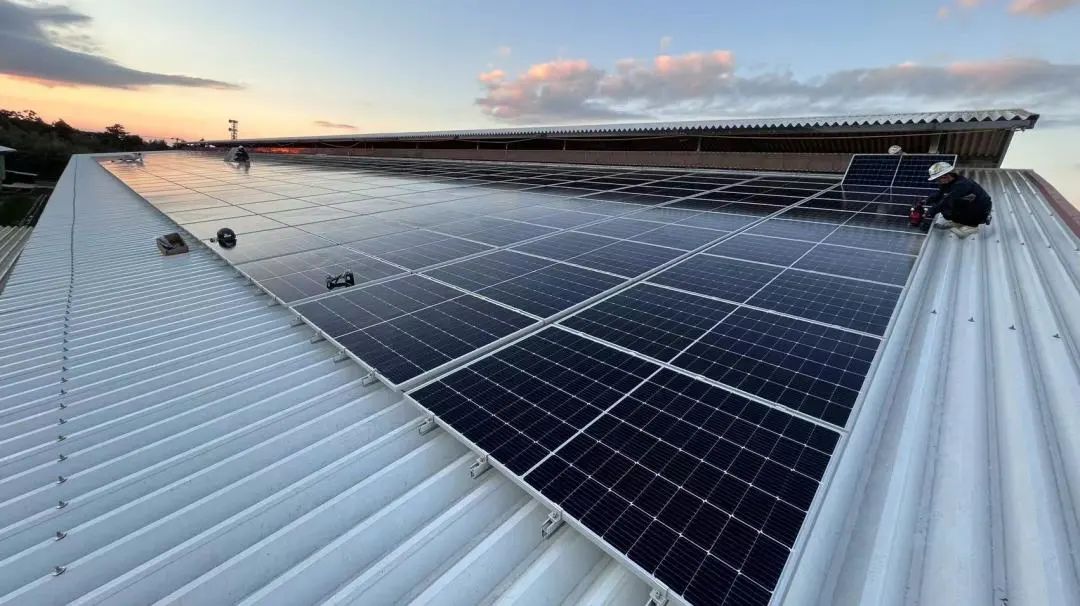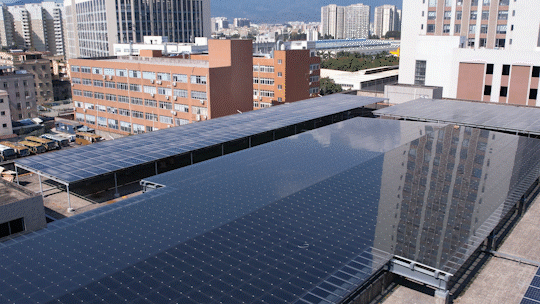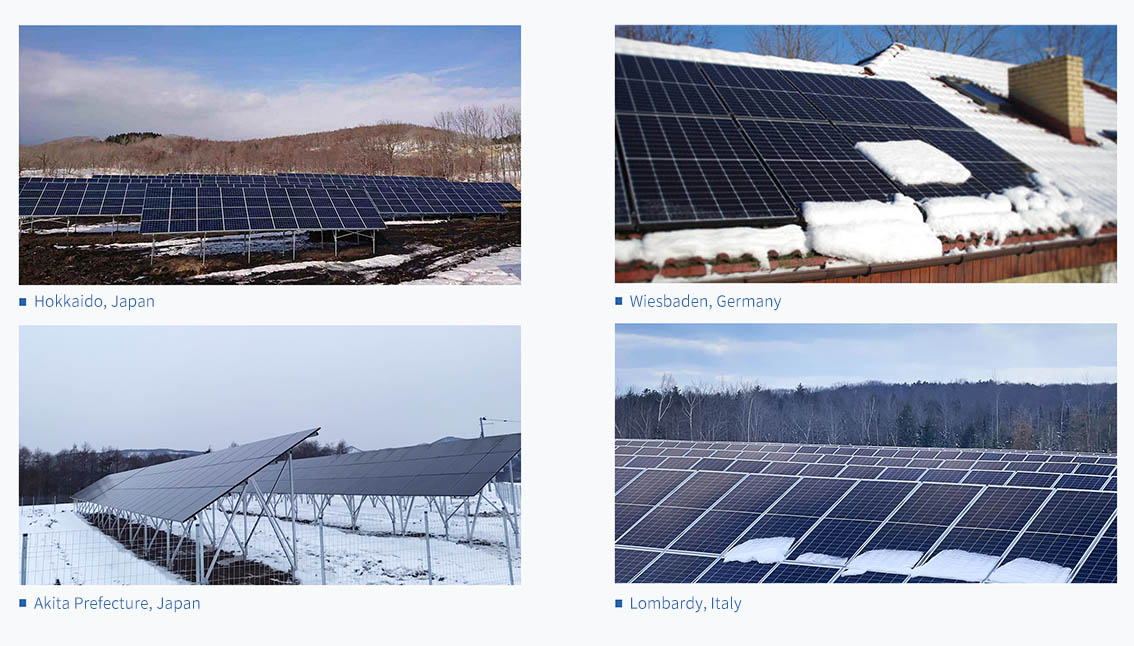As we work towards modernizing and making industrial and commercial buildings more sustainable, installing distributed solar PV plants has become a key strategy for improving energy efficiency and supporting environmental sustainability. Here are three common installation types for distributed photovoltaic power stations:
Type 1 : Parallel to Pitched Metal Roofs
This installation method is strong and easy to set up. Mounting structures, like T-clamps and standing seam clamps and klip-lok clamps can be securely attached to metal roofs. The PV modules installed on these roofs protect them from direct sunlight and rain, extending the life of both the roof and the mounting structures while maximizing economic benefits.
It’s particularly suitable for renovation projects with metal roofs, allowing for the smooth addition of a solar PV system without significantly altering the original building structure. This helps achieve energy savings and reduce emissions.

Type 2: Flat Roof PV System
Best suited for large industrial and commercial buildings, this system ensures the original roof remains undamaged during installation. The process begins with careful design and measurements with the spacing and placing concrete foundations at specific points. Then, posts are attached to these foundations, by the installation of mounting arrays and PV nodules.
This installation is safe, reliable, and enhances the aesthetics of the building while generating revenue, making it perfect for those seeking a blend of efficiency and style.

Type 3: Building Integrated Photovoltaics
BIPV involves integrating solar panels directly into the building structure, effectively replacing traditional roofing materials. While this approach requires high-quality waterproofing, BIPV materials not only fulfill lighting needs but also ensure proper integration with the building, enhancing waterproofing. This method increases the building’s lifespan, reduces maintenance costs, and addresses leakage issues, showing significant potential for future development. BIPV allows for seamless integration of solar energy systems into buildings, marking an important step in the evolution of green building practices.

In summary, these various installation types help businesses effectively harness PV technology, reduce reliance on traditional energy sources, and contribute positively to energy savings and emissions reduction goals.
For more information on PV, please follow Huge Energy!
Advantages of Huge Energy Solar PV Mounting Structures
Huge Energy solar PV mounting structures feature carefully selected materials, such as corrosion-resistant aluminum alloys, high-strength steel products and top-quality stainless steel bolt sets. Precision machining ensures durability in varied environments.
Before constructing a solar plant, we design a reliable PV mounting system and connection method tailored to the specific wind speeds and snow loads of the location. This enhances the structure’s ability to withstand crosswinds to ensure the overall stability. Our custom design service optimizes installation angles and minimizes shading losses, maximizing energy capture.
We offer 10-15 years of quality assurance and 25-years design life. Our “safety-first” engineering strategy has resulted in a decade of accident-free operations. Count on us for professional services from consultation through installation to ongoing maintenance.
We stand by our commitment to effective energy solutions and sustainable development. And we meet your expectations in every aspect and get your investment to the maximum return. 